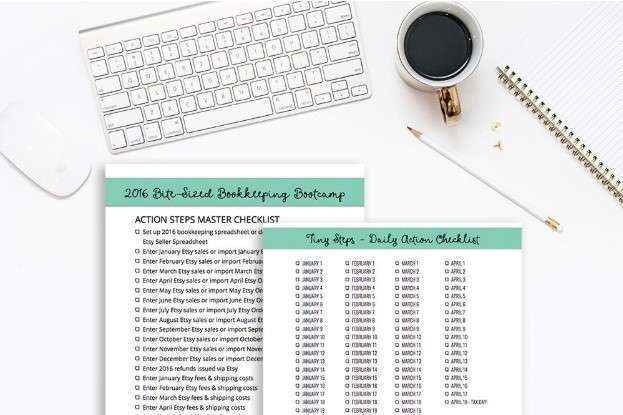You can even manage your entire bank reconciliation and bookkeeping from your phone, by simply downloading the Deskera mobile app. With the Deskera Books platform, you’re able to make comparisons between the company’s sales and purchases and your bank record within seconds, without having to lift a finger. If you want to learn how to prevent unrecoverable and defective payments and create an allowance for these doubtful accounts, check out our guide on bad debt expenses.
- It also allows finance teams to spend more time on value-add tasks, such as evaluating data to inform company strategy and key decisions.
- While not all software is equal, Accounting Seed specializes in delivering a fast and effective reconciliation.
- The company can now take steps to rectify the mistakes and balance its statements.
- Deposits in transit are cash and checks that you’ve received and recorded in your internal accounting records, but which haven’t yet cleared your bank account.
- If you notice that an entry is missing, you can click on the create button to create a new deposit or payment entry to reconcile the account.
Here are five compelling reasons why your reconciliations should be performed monthly. Bank statements are commonly routinely produced by the financial institution and used by account holders to perform their bank reconciliations. Adjust the cash balances in the business account by adding interest or deducting monthly charges and overdraft fees.
However, there can be situations where your business has overdrafts at the bank. When you access this website or use any of our mobile applications we may automatically collect information such as standard details and identifiers for statistics or marketing purposes. You can consent to processing for these purposes configuring your preferences below. If you prefer to opt out, you can alternatively choose to refuse consent. Please note that some information might still be retained by your browser as it’s required for the site to function. Harold Averkamp (CPA, MBA) has worked as a university accounting instructor, accountant, and consultant for more than 25 years.
Resources for Your Growing Business
On the flipside, your bank statement may not show deposits if they’re still being processed by the bank. When performing a bank reconciliation, begin by adding positive transactions. An example of a positive transaction would be interest income earned from your bank throughout the period (usually one period equals one month).
To review, bank reconciliation is the process of validating your transaction history with that of your bank. The goal is to see if there are any inconsistencies present between your balance and the bank’s balance. Bank reconciliation accounting focuses on identifying these discrepancies.
What is a bank reconciliation statement?
Ideally, you should reconcile your bank account each time you receive a statement from your bank. This is often done at the end of every month, weekly and even at the end of each day by businesses that have a large number of transactions. You receive a bank statement, typically at the end of each month, from the bank. The statement itemizes the cash and other deposits made into the checking account of the business.
See any payments or transactions across checking, savings, and credit card accounts in a single view. Get a complete, real-time picture of all company funds and cash flows without having to hunt them down. Import statements from any bank and reconcile your checking, savings, and credit card accounts with a button click. Bank accounts for businesses can involve thousands of transactions per month. Due to the number of ongoing transactions, an organization’s book balance for its checking account rarely is the same as the balance that the bank records reflect for the entity at any given point.
Kevin Payne is a personal finance and travel writer who covers credit cards, banking, and other personal finance topics. In addition to Forbes, his work has been featured by Bankrate, Fox Business, Slick Deals, and more. He is the budgeting and family travel enthusiast behind Family Money Adventure. Reconciling your bank statement can help you avoid bounced checks (or failing to make electronic payments) to partners and suppliers. After adjusting the balances as per the bank and as per the books, the adjusted amounts should be the same.
Once solved, be sure to adjust your records to reflect deposits as needed. Next, check to see if all of the deposits listed in your records are present on your bank statement. For example, real estate investment company ABC purchases approximately five buildings per fiscal year based on previous activity levels.
Reasons for preparing a bank reconciliation statement
Mitch has more than a decade of experience as personal finance editor, writer and content strategist. Before joining Forbes Advisor, Mitch worked for several sites, how to be a good leader including Bankrate, Investopedia, Interest, PrimeRates and FlexJobs. You come to know about such deductions only when you receive the statement from the bank.
Errors Committed by your Business While Recording Transactions
Using this simple process each month will help you uncover any differences between your records and what shows up on your bank statement. The first step in bank reconciliation is to compare your business’s record of transactions and balances to your monthly bank statement. Make sure that you verify every transaction individually; if the amounts do not exactly match, those differences will need further investigation. You could have accidentally booked a journal entry that debited or credited cash. This is where a general ledger helps you reconcile day-to-day transactions.
Let’s delve into this and more when we review how a bank reconciliation should be prepared. Ensure that you take into account all the deposits as well as the withdrawals posted to an account in order to prepare the bank reconciliation statement. This is done by taking into account all the transactions that have occurred until the date preceding the day on which the bank reconciliation statement is prepared. Once you complete the bank reconciliation statement at the end of the month, you need to print the bank reconciliation report and keep it in your monthly journal entries as a separate document. Such a time lag is responsible for the differences that arise in your cash book balance and your passbook balance.
What is the importance of bank reconciliation statement?
Bank reconciliation statements are often used to catch simple errors, duplications, and accidental discrepancies. Some mistakes could adversely affect financial reporting and tax reporting. Without reconciling, companies may pay too much or too little in taxes.
When done frequently, reconciliation statements help companies identify cash flow errors, present accurate information to investors, and plan and pay taxes correctly. They can also be used to identify fraud before serious damage occurs and can prevent errors from compounding. Bank reconciliation statements are tools companies and accountants use to detect errors, omissions, and fraud in a financial account. Bank reconciliation is a simple and invaluable process to help manage cash flows.
ADJUST THE BANK STATEMENTS
Journal entries are required to adjust the book balance to the correct balance. Regular bank reconciliations ensure you can keep track of all interest payments, fees or penalties your bank might add to your account. Many companies are realising the benefits of investing in digital finance software and automating key processes, including bank reconciliations. This drives greater efficiency in their business and saves company resources. It also allows finance teams to spend more time on value-add tasks, such as evaluating data to inform company strategy and key decisions. Bank reconciliation statements ensure that payments were processed and cash collections were deposited into the bank.









